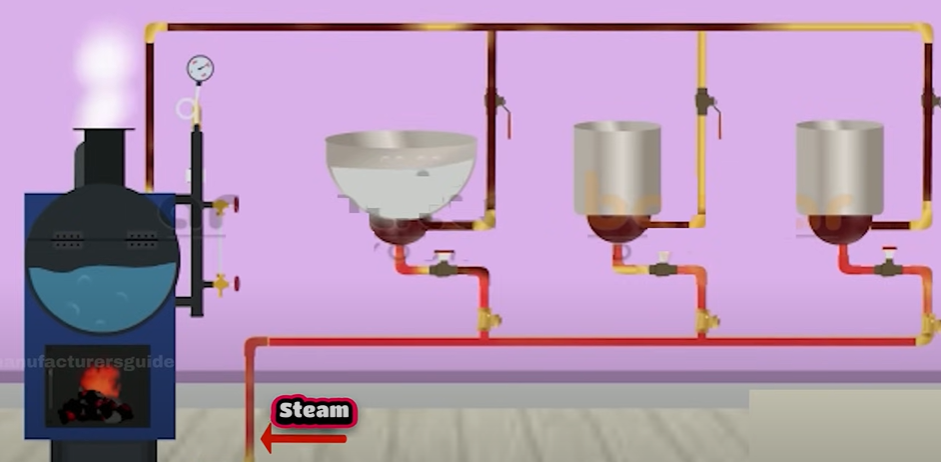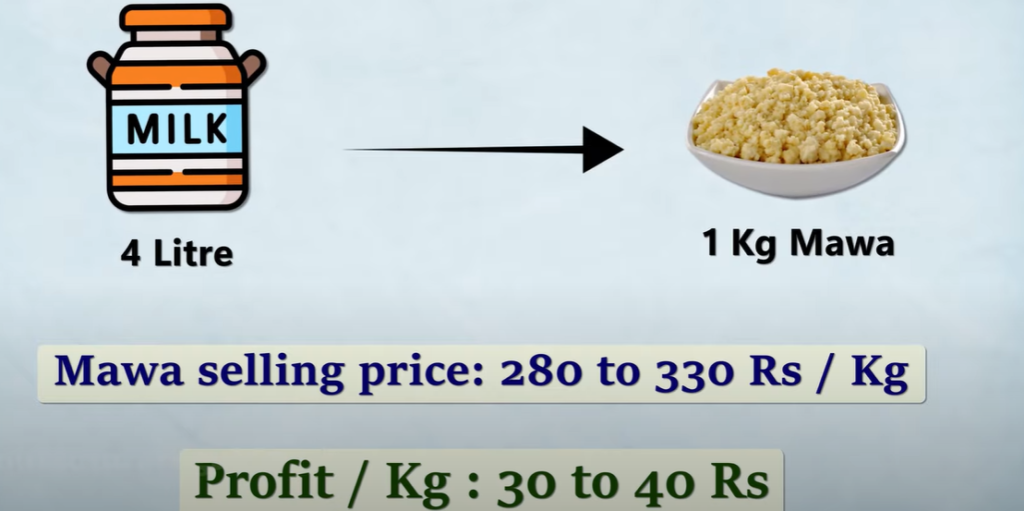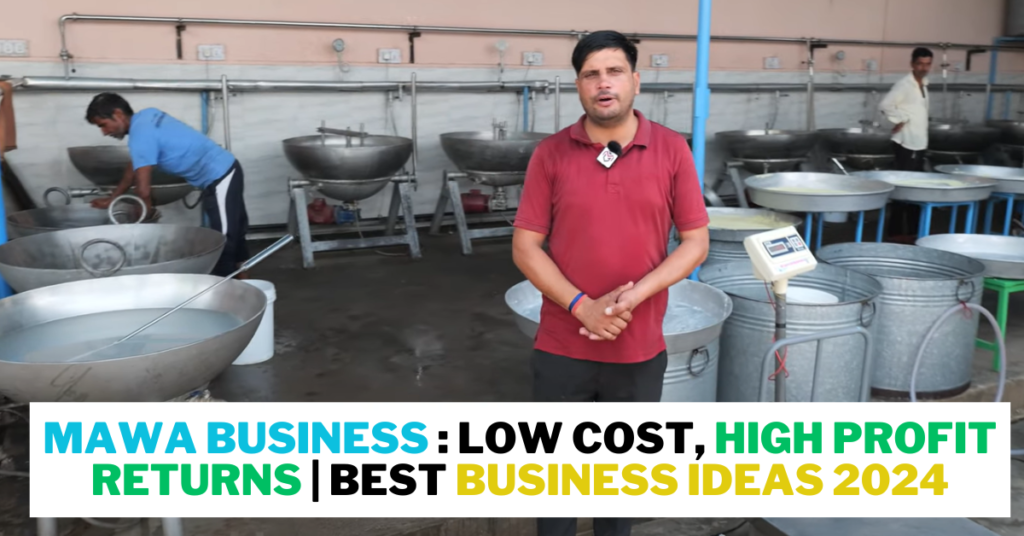Discover the secrets of a high-profit Mawa business with low investment and high returns. Learn the best business ideas for 2024 to maximize your profits and start your journey to financial success.
Table of Contents
Introduction
Starting a Mawa business can be a lucrative venture due to its consistent demand. This guide will take you through each step of setting up and running a successful Mawa production business, from sourcing milk to the final packaging of the product. We will also explore advanced technologies that can significantly reduce production costs and improve profit margins.
Video Tutorial: Mawa Business High Profit Business Ideas 2024
In this video we have showed how you can start Mawa making business from Mawa making machine. Mawa / khoya is very high demanding products where in india is also known as mava , khoya. We have showed you mawa and paneer making in factory and also showed mawa / khoya / paneer production from GCI Boiler machine. From this machine setup og Boiler + Kettle you can start various business like mawa making business, khoya making business. This business you can start in low investment in India and this business idea is for women too. This business idea in 2024 is very low risk no competition business idea in 2024 and you can claim this as monopoly business ideas.
Step 1: Understanding the Mawa Business
Overview of Mawa Production
Mawa, a dairy product used in various sweets, has a high demand throughout the year, especially during festivals and weddings. Consistent daily production and sales make it a stable business.
Importance of Customer Retention
Once you establish a fixed customer base, their routine demand will ensure continuous sales and production. This stability is crucial for scaling the business over time.
Step 2: Leveraging Cost-Effective Technology
Advanced Production Technology
Using innovative technology can drastically reduce production costs. For instance, a technology that previously required a cost of ₹1 now only costs ₹0.50.

This significant reduction in production cost increases profit margins and competitiveness in the market.
Benefits of Technology in Production
- Cost Savings: Up to 50% reduction in production costs.
- Fuel Efficiency: Save up to 70% on fuel costs.
- Quality Maintenance: Ensures high-quality Mawa with better color and consistency.
Step 3: Setting Up the Production Unit
Sourcing Milk
Milk is the primary raw material for Mawa production. Sourcing milk from rural areas where dairy farming is prevalent ensures a steady supply. For example, sourcing 3,000 to 4,000 liters per day is common, with higher volumes during peak seasons.
Essential Equipment

- Steam Boiler: Essential for heating and converting milk into Mawa.
- Mawa Kadai (Pan): For cooking and stirring the milk to produce Mawa.
How Steam Boiler Works
- Heating: Uses fuel like wood, gas, or coal to heat water and produce steam.
- Steam Circulation: Steam heats the milk in the Kadai, converting it into Mawa.
- Efficiency: Modern boilers recycle water, reducing waste and operating costs.
Step 4: Production Process
Initial Setup
- Start the Steam Boiler: Fuel the boiler and let it generate steam.
- Pour Milk into Kadai: Use a motorized stirrer to keep the milk moving, preventing it from sticking or burning.
Cooking the Milk
- Heating: Steam heats the milk, gradually reducing it to form Mawa.
- Stirring: Continuous stirring ensures even cooking and prevents burning.
- Completion: In about 18-20 minutes, 20 liters of milk will convert into Mawa.
Post-Production
- Stop the Machine: Turn off the boiler and stirrer.
- Remove Mawa: Transfer the finished Mawa into cooling trays.
- Cleaning: Fill the Kadai with water to clean it for the next batch.
Step 5: Packaging and Marketing
Packaging
Cool the Mawa before packaging. Use appropriate packaging sizes (e.g., 2 kg, 5 kg, 10 kg) based on customer requirements.

Marketing Strategies
- Quality Assurance: Maintain high quality to build a good reputation.
- Branding: Create a brand name synonymous with quality (e.g., Madan Lal Mawa).
- Consistent Supply: Ensure regular supply to retain and grow your customer base.
Customer Relationships
Building strong customer relationships through consistent quality and reliability is key to a successful Mawa business.
Step 6: Calculating Profit Margin for a Mawa Business
To calculate the profit margin for a Mawa business, we’ll consider the costs of raw materials, production, and selling price. Here’s a step-by-step breakdown:
1. Raw Material Costs
- Milk Cost: ₹40 per liter
- Other Ingredients: Minimal (if any)
For example, producing 20 kg of Mawa typically requires about 100 liters of milk.
- Total Milk Cost for 100 liters: 100 liters * ₹40/liter = ₹4,000
2. Production Costs
- Fuel Cost: Using advanced technology, let’s assume it costs ₹0.50 to produce 1 kg of Mawa.
- For 20 kg of Mawa: 20 kg * ₹0.50 = ₹10
- Labor Cost: Assuming ₹500 per day for labor
- Miscellaneous Costs (maintenance, utilities): ₹200 per day
- Total Production Cost: ₹10 + ₹500 + ₹200 = ₹710
3. Total Cost
- Total Raw Material Cost: ₹4,000
- Total Production Cost: ₹710
- Total Cost for Producing 20 kg of Mawa: ₹4,000 + ₹710 = ₹4,710
4. Selling Price
Assuming the selling price of Mawa is ₹300 per kg.
- Total Revenue from Selling 20 kg of Mawa: 20 kg * ₹300/kg = ₹6,000
5. Profit Calculation

- Total Revenue: ₹6,000
- Total Cost: ₹4,710
- Profit: ₹6,000 – ₹4,710 = ₹1,290
6. Profit Margin
Profit margin is calculated as:
Profit Margin=(ProfitTotal Revenue)×100\text{Profit Margin} = \left( \frac{\text{Profit}}{\text{Total Revenue}} \right) \times 100Profit Margin=(Total RevenueProfit)×100
Profit Margin=(₹1,290₹6,000)×100=21.5%\text{Profit Margin} = \left( \frac{₹1,290}{₹6,000} \right) \times 100 = 21.5\%Profit Margin=(₹6,000₹1,290)×100=21.5%
Summary
- Total Revenue: ₹6,000
- Total Cost: ₹4,710
- Profit: ₹1,290
- Profit Margin: 21.5%
This profit margin indicates that for every kilogram of Mawa sold, the business retains approximately 21.5% of the selling price as profit.
Step 7: Scaling the Business
Expanding Production
As demand grows, increase production by adding more equipment and sourcing more milk. Start small and scale up gradually, maintaining quality and efficiency.
Cost Management
Continue using advanced technology to keep production costs low and profit margins high.
FAQ’s
Is Khoya Business Profitable?
Yes, the Khoya business is quite profitable. In India, around 80% of sweets are made from Khoya. Additionally, Khoya is used in making halwa and ice cream. Given the high demand for sweets in India, starting a Khoya business can be a lucrative venture
What are the Health Benefits of Khoya (Mawa)?
Khoya is rich in calcium and phosphorus, making it beneficial for bone health. It is also a protein-rich food and contains B vitamins such as riboflavin and vitamin B12. If made from fortified milk, it may also contain dietary vitamin D.
How Do You Preserve Khoya?
Khoya can be stored in an airtight jar in the fridge for up to 1 week or in the freezer for up to 2 months. For recipes like peda, gujiya, ladoos, and burfi, cook the Khoya further for 2 to 3 minutes more before using.
What is the Storage Life of Khoya?
The storage life of Khoya is around 1 week in the refrigerator. It can also be frozen for up to 2 months.








